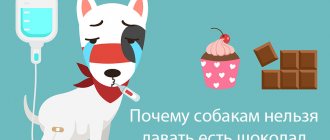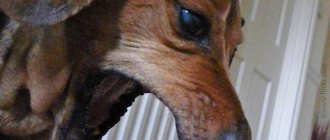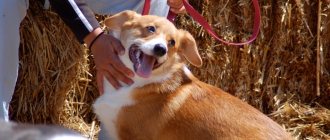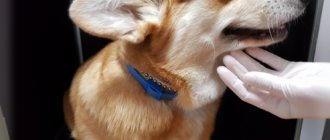Most dogs know the difference between eating objects and eating normal food. But we all know naughty dogs who tend to eat things they shouldn't. If you're reading this thinking, "Yeah, I have a dog like this and he just ate a sock!" Then this article is for you.
Dogs are known to eat all sorts of things.
Tennis balls, toys, tea towels and various items of clothing. One of the most common items that pet dogs swallow is socks.
If this happens, there is a chance that it could lead to a blockage in your dog's intestines.
That's why it's important to know what to do if your dog accidentally swallows a sock.
You need to act quickly to prevent a blockage, and time is of the essence. Let's take a look at what you can expect and what to do next.
My dog ate a sock, what should I do now?
First of all, don't panic! You need to keep a clear head so you can help your puppy. Make sure your dog is in a safe place where he can no longer eat socks (or other items!)
Call your veterinarian immediately. Be sure to let them know when you think the sock has been eaten. You will also need to know the approximate weight and breed of your puppy. Your veterinarian can use this information to determine the best next steps. Do not try to force your puppy to burp unless recommended by your veterinarian.
What happens if my dog eats a sock?
Vomiting may occur soon after eating or drinking and may even be profuse. However, the absence of vomiting does not mean that the dog did not swallow the sock. Vomiting is usually a sign that a sock is stuck somewhere in the digestive tract. If your pooch isn't vomiting, the foreign body may not be stuck yet.
But that doesn't mean it won't cause a bowel blockage later.
Other signs that your puppy has eaten a sock may include lethargy (he has less energy than usual), excessive drooling, not eating (or eating less than usual), panting more than usual, diarrhea, constipation or black stools.
If the sock was swallowed some time ago, you may notice weight loss. Keep in mind that your puppy may continue to have bowel movements even if the sock is stuck somewhere in his digestive tract.
It's important to know that your dog can show any of these signs even if he hasn't eaten the sock. If you are unsure and notice any of these signs, make sure you have him checked by your veterinarian.
Why does my dog eat socks?
Sometimes your dog might accidentally eat a sock. Although it is difficult to understand how this happens, dogs often mistake it for some kind of product. Seriously though, this strange behavior could mean something more serious than what meets the eye. A likely reason could be that you are spending less time with him and this is what he is doing to get your attention.
© shutterstock
Resource guarding is another distinctive behavioral feature of dogs. The dog often perceives inanimate objects as valuable and considers it his duty to protect them. They ensure the safety of the object and prevent it from being touched. Socks belong to this category and are therefore often guarded by your pet. Because socks carry your scent, dogs love to play with them to show how much they miss you.
Try incorporating playtime into your pet's daily routine. Not only will this improve your pet's health and play level, but it will also take his attention away from items like socks, thereby reducing the likelihood of them being swallowed.
Diagnostics
Your veterinarian will begin with a complete examination. Following certain steps will help your veterinarian determine if pain is present and what steps need to be taken immediately. Typically this examination includes:
Heart and respiratory examination
One or both of these may be increased if your dog is sick or uncomfortable. Your veterinarian can tell you a lot about your dog's health simply by performing a basic exam to check vital signs.
Check for dehydration
Dehydration can occur if your puppy doesn't eat or drink, or if he has vomiting or diarrhea. Dehydration can lead to other problems if left untreated and may be a sign that your puppy needs urgent help.
Palpation of the stomach
Your dog may show signs of discomfort during this part of the exam. Especially if the sock is blocking the intestines. Sometimes your veterinarian may feel a sock stuck in your dog's intestines. Although this is often impossible.
How to remove a sock from a dog's belly
There are certain procedures you can follow to help your furry friend get rid of a sock he may have eaten. However, do not try any of them without proper medical guidance because by doing so, you may also harm your dog. The choice of the appropriate procedure depends on the time elapsed since the sock was ingested, and the following various alternatives :
© shutterstock
- Use of laxatives . A simple solution to getting rid of unwanted socks from your pet's stomach is to let your dog eliminate them naturally. You can use laxatives to make the elimination process easier and faster. Your dog may exhibit certain behavioral changes, such as short temper and agitation, until the sock leaves his system.
- Endoscope for sock removal . If your dog has eaten a sock and you are lucky enough to realize it right away, contact your veterinarian immediately. If your dog is small and the sock he swallowed is large, it can be removed using an endoscope. The sock can be easily pulled out using an endoscope if you rush to an endoscopist as soon as possible.
- Operation . This should be a last resort, but sometimes it is an unavoidable procedure. Surgery is a nightmare for both owner and pet, but if the sock is causing an intestinal obstruction, it is the only option.
- Inducing vomiting to remove a sock . This procedure is a medical emergency for your dog and requires proper attention from a veterinarian. To rid your pet of a sock he ate, you can administer 3% hydrogen peroxide orally. The recommended dosage is one teaspoon per 4 kg of your dog's weight. The result is obvious within 10-15 minutes after taking hydrogen peroxide.
To avoid such situations when your dog swallows a sock, first of all you need to organize your wardrobe. Make sure your items, such as socks, underwear, or other clothing items, are not lying around for your dog to eat. However, if you are faced with such a situation, do not panic. Contact your veterinarian for help, but be sure that your dog's life is not in danger. This is a temporary disorder that will go away, albeit after following certain procedures and doing the DIY treatment.
However, prevention is still preferable to cure and hence should be your goal.
Author of the article : Olivia Williams.
Treatment and induced vomiting
Depending on how long ago the sock was ingested, your veterinarian may give a medicine (an "emetic") to induce vomiting. They do this in the hope that the sock will come back out.
This is usually done by injection, and is only done if they suspect it is still in their stomach (as opposed to having passed further down their digestive tract into their intestines).
The effect of the injection usually wears off after about 15-20 minutes. Your puppy may feel nauseous for several hours afterward. If your puppy continues to vomit, your veterinarian may give him another injection to stop the illness (an antiemetic).
Sometimes regurgitation injections may not work. Or your dog may vomit stomach contents but not regurgitate the sock.
Your veterinarian may recommend waiting to see if it goes away on its own. This will depend on the size of the dog and the size of the sock eaten.
If it is unlikely that the sock will pass through the digestive tract without getting stuck and causing an intestinal obstruction, surgery is recommended.
What to do if you can’t get it
The measures taken do not always give a positive result. It happens that an item remains in the lumen of the gastrointestinal tract, causing a blockage. Consequences: stopping food digestion, peritonitis. This applies to cotton products. What to do when a dog eats a cotton sock that ends up stuck is up to the veterinarian to decide. Usually the object is removed surgically.
Procedure:
- Carrying out intracavitary surgery.
- Compliance with the recovery regime.
- Wearing a special bandage.
- Giving antimicrobial drugs.
- Adding vitamins to the diet.
- Implementation of dosed walks.
- Avoid contact with other animals.
If a dog has eaten a nylon sock, what to do can be decided in the same way. This usually ends favorably for the pet. The main thing is to help in time and not delay. If the foreign object does not come out within 1–2 days, then veterinarian consultation is needed. It is better to avoid such situations. It is enough not to leave socks within reach.
Further testing
If the sock was ingested some time ago, your veterinarian may suggest additional tests to try to determine where the sock is located in the digestive system. It is important to determine whether this is causing intestinal obstruction.
The most useful tests to try to determine this are either an x-ray or an ultrasound of your dog's abdomen. Sometimes an endoscope (a small camera that goes down the throat) or a CT scan may be needed.
Your veterinarian may also suggest a blood test to check if it has affected your dog's other organ functions. This will also help determine if there are any imbalances in his salt balance that need to be corrected. Your veterinarian may start an IV for this or give him vital fluids if he shows signs of dehydration.
What items do puppies swallow most often?
Experts in veterinary insurance for pets have compiled a rating of the most common items removed by surgeons from the gastrointestinal tract of pets.
Most often, puppies swallow socks, followed in descending order by items of underwear, tights, pebbles, balls, chew toys, corn cobs, bone fragments, ties, hair ribbons, and sticks.
As a rule, puppies are more interested in things with the owner's scent, but this list can be continued indefinitely.
The puppy may eat a whole or part of a toy, small jewelry, coins, pins, erasers and paper clips.
Strings, threads (with or without a needle), fishing equipment (hooks and lines), Christmas tree decorations and yarn are extremely dangerous for animals.
Don't give your puppy bird bones. This is especially true for adult puppies: they can easily chew on any object, wood or bone, which is dangerous for them.
Even an ordinary piece of rawhide can stop your pet’s digestion.
Never pull on the visible end of the rope, either from the puppy's mouth or rectum. Thread and fishing line are usually attached to a needle or fish hook, the sharp end of which is likely to catch on the wall of the digestive tract. If you pull on the end of the string, you risk damaging the intestinal tube and even killing your dog.
Surgery for intestinal obstruction
The type of surgery needed will depend on what part of his digestive system the sock is in. It will also depend on how long he was there.
For all types of surgery, dogs will need full anesthesia and an incision will be made in the abdomen. If the sock has recently become stuck and there is no damage to the intestine, an incision will be made in the intestine to carefully remove the sock.
If the sock gets stuck for any length of time, that part of the intestine can be permanently damaged as the blood supply is cut off due to the obstruction.
In rare cases, the part of the intestine in which the sock is stuck may break and rupture. This causes a severe, life-threatening infection called peritonitis. In any of these cases, the damaged part of your dog's intestine must be surgically removed.
Danger of getting a sock inside the stomach
If it gets into the stomach, the sock can split into threads due to exposure to the aggressive environment of gastric juice, it can pass down the intestines (if it is small in size compared to the stomach), or it can get stuck in the stomach.
If the product gets stuck in the stomach, this can lead to indigestion of food and subsequently to peritonitis. Cotton socks are the most insidious when swallowed; such products will swell more and more from internal moisture, leading to rotting of food and bloating of the stomach. Without qualified assistance provided in a timely manner, the consequences for the animal in this case can be fatal.
Will my dog be okay?
If the sock was recently eaten and vomited again, your puppy will likely make a full and almost immediate recovery. At best, he might have an upset stomach for a couple of days.
If surgery is required, there is an element of risk involved. In uncomplicated operations, when there is no need to remove any part of the intestine, the prognosis for complete recovery is usually very good.
If your dog requires part of his intestine to be removed, there is a higher risk of post-operative complications. After surgery, your puppy will be closely monitored in the hospital.
Once your dog recovers from surgery, it is unlikely that he will suffer any long-term side effects from losing part of his intestines.
The exception is when most of the intestine is damaged and needs to be removed. If this is the case, then your canine companion may be more prone to diarrhea and other digestive problems in the future.
In the case of an obstruction leading to intestinal rupture, your dog has a much more guarded prognosis and a higher risk of death, although a full recovery is still possible.
Measures to prevent socks from getting into your dog's stomach
The main measure to prevent the negative consequences of a dog eating socks is to remove all socks , especially cotton ones, from the dog’s reach.
Constant and thorough cleaning of the home space from objects potentially dangerous to the dog will guarantee the peace of mind of the owners and the health of their pets.
It would be useful to periodically train the dog competently to form a negative attitude towards socks and items made of fabric.
Eating obviously inedible objects, in particular socks, can also be an indicator of the dog’s general nervousness and anxiety. Compliance with a regime of walks, a balanced diet, games - all this will reduce the dog’s anxiety level and lead to greater harmonization of the relationship between the dog and the person.










